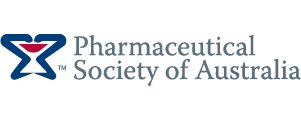Your Frequently Asked Questions about Eczema - Answered
Welcome to our FAQ page designed to answer questions that our audience has raised throughout the eczema program. These answers are backed by strong evidence or expert consensus to provide clarity around best practice management of eczema.
-
The best moisturiser is the one the patient likes and is happy to use often.[1] Remind the patient that they may need to try a few moisturisers before they find the one that works best for their skin.
-
Moisturisers containing ceramides have the potential to repair the skin barrier more effectively than other moisturisers,[2] however it is important to consider patient circumstances, needs and preferences.
-
Advise against moisturisers that contain:
-
Animal or plant derived proteins[3] (i.e. nuts, coconut, milks)
-
Essential oils (i.e. lavender, tea tree and rosemary)
-
Aqueous cream[4] (contains sodium lauryl sulphate)
-
Certain preservatives (benzalkonium chloride,[5] methylchloroisothiazolinone and methylisothiazolinone (MCI/MI)
- Can they be applied at the same time as moisturisers?
-
How long should they be applied for?
-
Topical corticosteroids should be applied generously to all areas of inflammation (not just the worst) until the skin feels smooth and is itch-free, without strict time limits for when to stop treatment.[7]
-
By telling your patient a strict time limit there is a risk of stopping treatment prematurely, leading to rebound flares and a chronic cycle of inflammation.
-
-
What age are they safe to be used from?
-
-
The minimum age recommended differs based on the steroid, a summary of commonly prescribed topical corticosteroids of different potencies and their age restrictions are listed below.[8]
-
Mometasone >= 4 months
-
Methylprednisolone >= 1 month
-
Betamethasone* >= 1 month
-
Hydrocortisone, all ages
-
-
*Betamethasone OV is not recommended for children <12 years old[5] - consider use only on specialist advice
-
Which topical corticosteroid should I use for eczema on the face?
-
Choice varies based on patient age and severity of flare.
-
Mild facial eczema: Hydrocortisone 1% once daily until the skin is smooth and itch free.
-
Moderate to severe facial eczema: Methylprednisolone aceponate 0.1% (adult, or child 4 months or older) once daily for up to 7 days. If a topical corticosteroid is still needed after this time step down to hydrocortisone 1% or consider a topical calcineurin inhibitor.
-
What formulation should I prescribe?
-
Ointments form an occlusive layer, locking in moisture and penetrating the skin more effectively than creams.[9] An ointment base also typically stings less as it doesn’t contain preservatives.[10]
- Consider a cream base may for an acute weeping rash, and lotions or hydrogels for hairy areas.[10]
-
When should I recommend them?
-
-
Dilute bleach baths are considered useful for infected eczema and to prevent recurrent skin infections.[11]
-
-
What instructions should I give my patient?
-
Dilute bleach baths can be used twice weekly, for up to 10 minutes, for 3 months.[12]
-
It is recommended to use 12mL of unscented household White King bleach to every 10L of water.[13]
-
Resource to provide your patient
-
Food allergies are rarely the cause of eczema although can often present in these patients. Results of skin tests or blood tests for food allergy do not necessarily predict foods that are making the eczema worse. Allergy testing should only be undertaken if recommended and interpreted by a clinical immunology/allergy specialist.[3]
-
Elimination diets and modifications to infant formulas should generally be avoided in usual management of eczema.
-
Removal of foods may also increase the risk of developing an allergy to those foods. An elimination diet, if considered for a patient with severe eczema not adequately controlled by usual care, should be supervised by a clinical immunology/allergy specialist in association with a dietitian with specialised knowledge of food allergies.[3]
-
These resources have been developed in collaboration with the Australasian College of Dermatologists and are now available for download on the QHUB and via the links to additional resources below.
References
1. Ridd MJ, Santer M, MacNeill SJ, Sanderson E, Wells S, Webb D, et al. Effectiveness and safety of lotion, cream, gel, and ointment emollients for childhood eczema: a pragmatic, randomised, phase 4, superiority trial. Lancet Child Adolesc Health. 2022 Aug 1;6(8):522–32.
2. Francis JM. Are Ceramide Containing Creams A Safe And Effective Treatment For Patients With Atopic Dermatitis? 2017;
3. Australasian Society of Clinical Immunology and Allergy. Eczema (Atopic Dermatitis) Frequently Asked Questions (FAQ) [Internet]. 2023 [cited 2024 Mar 8]. Available from: https://www.allergy.org.au/images/ASCIA_PCC_Eczema_FAQ_2023.pdf
4. Aqueous Cream - Moisturiser or Irritant? [Internet]. [cited 2024 Mar 13]. Available from: https://www.medsafe.govt.nz/profs/PUArticles/AqueousCreamMarch2012.htm
5. Therapeutic Guidelines. Principles of dermatitis management [Internet]. 8/22 [cited 2024 Mar 13]. Available from: https://tgldcdp.tg.org.au/viewTopic?etgAccess=true&guidelinePage=Dermatology&topicfile=c_DMG_Considerations-in-the-use-of-topical-corticosteroids_topic_1&guidelinename=auto§ionId=c_DMG_Principles-of-dermatitis-management_topic_5#c_DMG_Principles-of-dermatitis-management_topic_5
6. Australasian College of Dermatologists. How do I apply topical corticosteroids for the treatment of eczema? [Internet]. 9/22 [cited 2024 Mar 8]. Available from: https://www.dermcoll.edu.au/wp-content/uploads/2022/09/ACD-Fact-Sheet-How-do-I-apply-topical-corticosteroids-for-the-treatment-of-eczema-September-2022.pdf
7. Australasian College of Dermatologists. Topical corticosteroids for the treatment of eczema. 2022 Sep [cited 2024 Mar 8]; Available from: https://www.dermcoll.edu.au/wp-content/uploads/2022/09/ACD-Fact-Sheet-Topical-corticosteroids-and-eczema-September-2022.pdf
8. AMH Children’s Dosing Companion [Internet]. [cited 2024 Mar 8]. Available from: https://childrens.amh.net.au.acs.hcn.com.au/
9. Purnamawati S, Indrastuti N, Danarti R, Saefudin T. The Role of Moisturizers in Addressing Various Kinds of Dermatitis: A Review. Clin Med Res. 2017 Dec;15(3–4):75–87.
10. Therapeutic Guidelines Limited. Dermatitis. 2022 [cited 2023 Sep 28]. Atopic dermatitis. Available from: https://tgldcdp.tg.org.au/viewTopic?etgAccess=true&guidelinePage=Dermatology&topicfile=c_DMG_Atopic-dermatitis_topic_1&guidelinename=auto§ionId=c_DMG_Atopic-dermatitis_topic_1#c_DMG_Atopic-dermatitis_topic_1
11. National Healthy Skin Guideline 2nd Edition Oct 2023 [Internet]. [cited 2023 Nov 3]. Available from: https://infectiousdiseases.telethonkids.org.au/globalassets/media/documents/our-research/healthy-skin-arf/hsg-digital-18-10-2023.pdf
12. Perth Children’s Hospital. Perth Childrens Hopsital - Eczema guideline [Internet]. 2023 [cited 2024 Mar 13]. Available from: https://pch.health.wa.gov.au/For-health-professionals/Emergency-Department-Guidelines/Eczema
13. The Royal Children’s Hospital Melbourne. Eczema: Clinical Practice Guidelines [Internet]. 2020. Available from: https://www.rch.org.au/clinicalguide/guideline_index/eczema/
In-consultation resources:
Educational activities and CPD:
- Podcast – Beyond Skin Deep: Unravelling the challenges of managing eczema
- Webinar – The Eczema Equation: Burden of disease and challenges in management
- Virtual Educational Visiting









